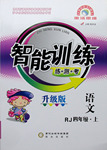题目内容
【题目】阅读下面材料,在空白处填入适当的内容(1个单词)或括号内单词的正确形式。
In South Korea smartphone cases come with rings fixed on the back 【1】 (prevent) clumsy owners from dropping them. This makes people look like they are married to their phones. In lots of Seoul’s coffee 【2】 (shop), couples on dates spend much more time looking at their screens 【3】 at each other. The results go beyond the 【4】 (potential) terrible consequences for romance.
Walk around the streets of Seoul, and there is 【5】 real risk of bumping into people 【6】 eyes are glued to their smartphone screens. According to the statistics, around 370 traffic accidents annually 【7】 (cause) by pedestrians using smartphones.
The government initially tried to fight the “smombie” (手机僵尸) phenomenon by distributing hundreds of stickers (贴纸) around cities, 【8】 (beg) people to “be safe” and look up. This seems to have had little effect even though, in Seoul at least, it recently replaced the stickers with stronger plastic boards.
Instead 【9】 appealing to people’s good sense, the authorities have therefore turned to trying to save them from being run over. Early last year, they 【10】 (begin) to test floor-level traffic lights in smombie hotspots in central Seoul. Since then, the experiment has been extended around and beyond the capital. For the moment, the government is keeping old-fashioned eye-level pedestrian lights as well. But in future, the way to look at a South Korea crossroads may be down.
【答案】
【1】to prevent
【2】shops
【3】than
【4】potentially
【5】a
【6】whose
【7】are caused
【8】begging
【9】of
【10】began
【解析】
这是一篇说明文。文章说明了韩国人的手机依赖症以及政府对这一现象已经采取的一些措施。
【1】考查不定式。句意:在韩国,智能手机外壳背面装有指环,以防止手机从笨拙的用户手中脱落。这句话中谓语动词为come with,所以空格处填非谓语动词。这里用来表达手机外壳装有指环的目的,故用不定式做目的状语。故填to prevent。
【2】考查名词的复数形式。句意:在首尔的很多咖啡店里,情侣看手机的时间远远超过看约会对象的时间。空格前有lots of与名词所有格修饰,所以空格处应填名词。shop(商店)为可数名词,lots of修饰名词时,应用名词的复数形式。故填shops。
【3】考查连词。句意同上。由much more time可知,这是一个比较句式。故填than。
【4】考查副词。句意:这一行为除了可能会破坏浪漫气氛,还有其他后果。空格位于形容词前,需用副词修饰。故填potentially。
【5】考查冠词。句意:走在首尔的街头上,你很有可能会撞到其他人,因为他们的注意力都在手机屏幕上了。空格后的名词为risk(风险),为单数形式,所以空格处应填冠词。real是以辅音音素开始的,故填a。
【6】考查非限制性定语从句。句意同上。这是一个定语从句,先行词为people,指人,且在从句中作eyes的定语,所以选用关系词whose,故填whose。
【7】考查一般现在时的被动语态与主谓一致。句意:据统计,每年大约370例交通事故是由用手机的行人引起的。这句话缺少谓语,由annually可知,这句话使用一般现在时。主语traffic accidents与cause之间是被动关系,所以使用被动语态。且由于主语traffic accidents是复数形式,所以谓语动词使用复数形式。故填are caused。
【8】考查现在分词。句意:政府最初试图通过在城市中分发数百个贴纸来恳求人们“注意安全”并抬头看,以此来应对“手机僵尸”现象。这句话的谓语动词为tried to,所以空格处填非谓语动词。主语The government与beg之间是主动关系,且分发贴纸与beg这两个动作是同时发生的,所以使用现在分词作状语。故填begging。
【9】考查介词。句意:政府当局没有诉诸于人们抬头看路的良好意识,而是试图挽救他们免于被车辆碾压。空格后为动名词形式,所以空格中填介词。“instead of”意为“代替; 作为……的替换”,符合句意。故填of。
【10】考查一般过去时。句意:去年年初,他们开始在首尔市中心的手机僵尸热点区域试点路面交通信号灯。这句话缺少谓语动词,且由early last year可知,这句话应使用一般过去时。故填began。

 智能训练练测考系列答案
智能训练练测考系列答案